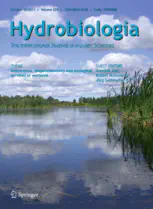The impact of climatic conditions and food availability on bimodality size structure and density of YOY pikeperch (Sander lucioperca)

Abstract
Understanding inter-annual variation in the density of young-of-the-year fish is an important tool for assessing stock status and guiding management decisions. We analyzed data spanning from 2003 to 2022 collected at Lipno Reservoir in Czechia. The study aimed to identify factors influencing the density of pikeperch (Sander lucioperca), a valuable predatory fish species in European waters. A bimodality test for the size class distribution has revealed the existence of two distinct YOY cohorts: extremely small (ES) and ordinary fingerlings. Using the Bayesian horseshoe prior method with 37 potential predictors, followed by linear regression, we observed that certain environmental factors similarly influenced both cohorts. Higher temperatures during spring and summer, coupled with increased densities of large and medium-sized cladocerans, positively affected the density of both cohorts. However, distinct influences were observed: for ordinary fingerlings, increased summer precipitation and a lower abundance of predators were beneficial, whereas, for ES fingerlings, summer copepod density emerged as an additional positive factor. This study emphasizes the importance of a detailed investigation of factors influencing pikeperch recruitment. Examining these drivers provides a clearer insight into the causes of variations in the early life stage, which is crucial for monitoring and managing populations in temperate reservoirs.